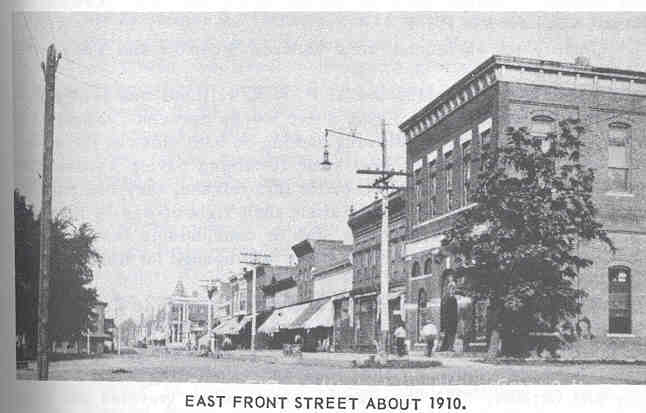
Mud made the streets almost impassable in the early spring, and in the summer and fall the dust was almost as deep. In 1907 the El Paso Business Menís Association purchased a large sprinkler tank and thousands of gallons of water were sprinkled on the streets each summer in an effort to lay the dust with only temporary success. Road drags were continually used to keep the streets free of ruts after heavy rains and during the winter thaws.
The business district carried the most traffic, so the three blocks on Front Street between Sycamore and Cherry were paved with brick, the first paving in El Paso. Keys and McNamara of La Salle did this

East Front Street about 1910.
between May 6 and June 20, 1907, at a cost of $14,546.34. With the hitching racks removed, the space was utilized to make the sidewalk in front, of the business houses four feet wider.
In 1911 a committee composed of Frank B. Stitt, George R. Curtiss, Albert E. Fleming, William H. Hoagland, Peter Donner, Dr. F. H. Henderson, Elmer H. Gray, A. S. McKinney, J. J. DeMotte and Dr. R. E. Gordon underwrote the cost of a car of road oil which was spread on the streets to stop the dust menace. Property owners who desired that protection paid per lineal foot for their coverage and approximately three miles of streets were oiled in July that year. As El Paso was one of the first towns in Illinois to adopt such program, it created
Page 121